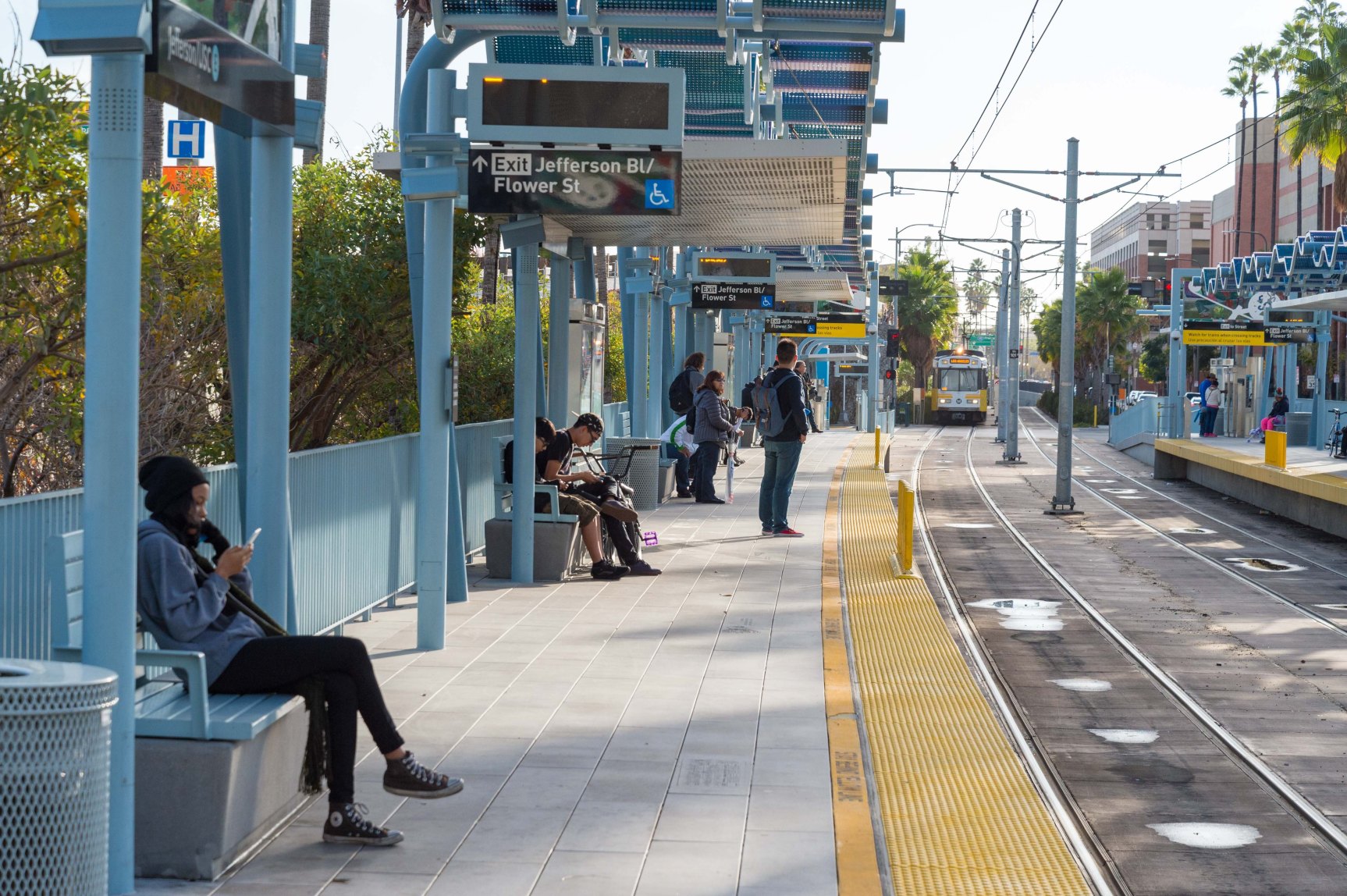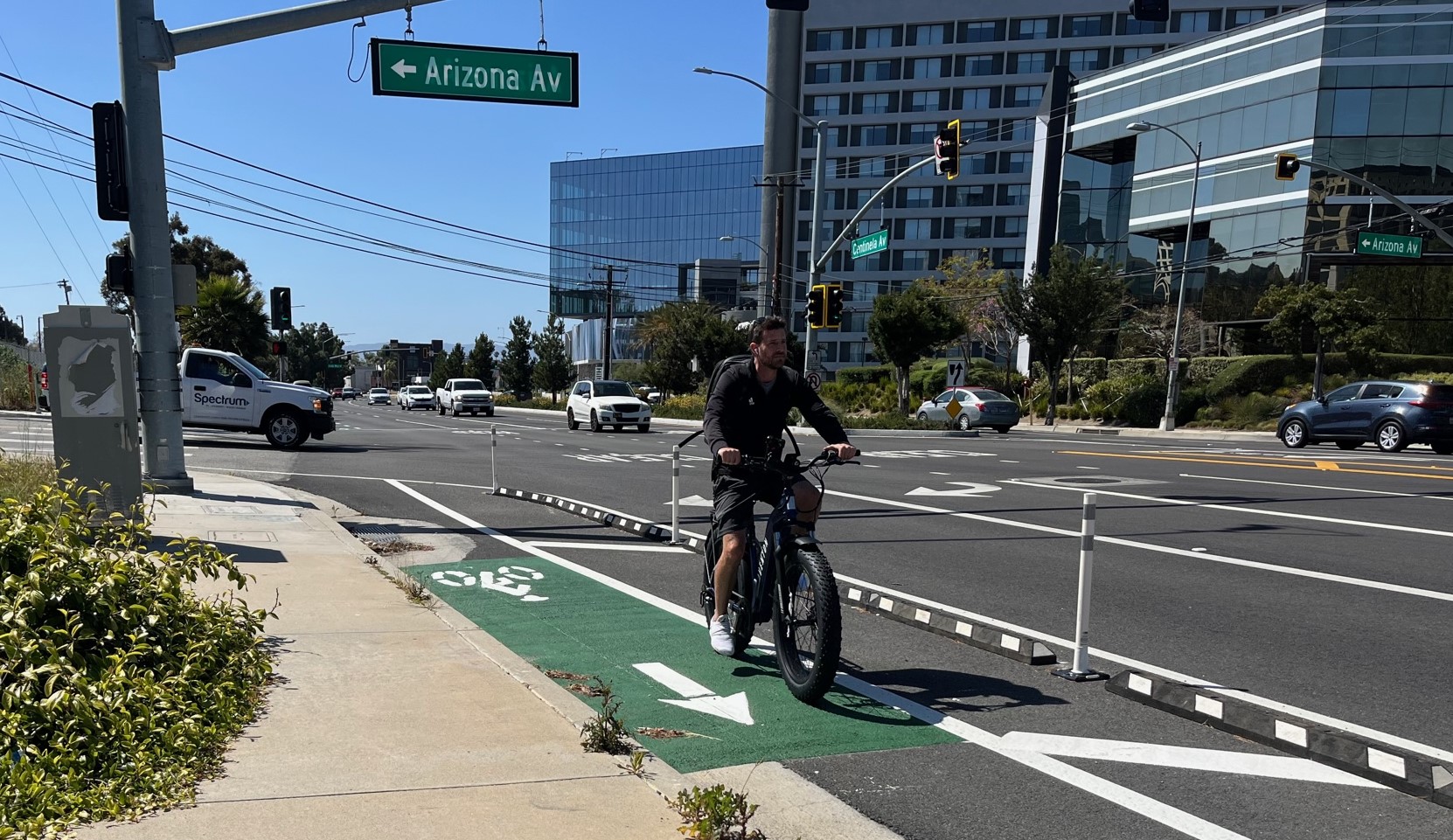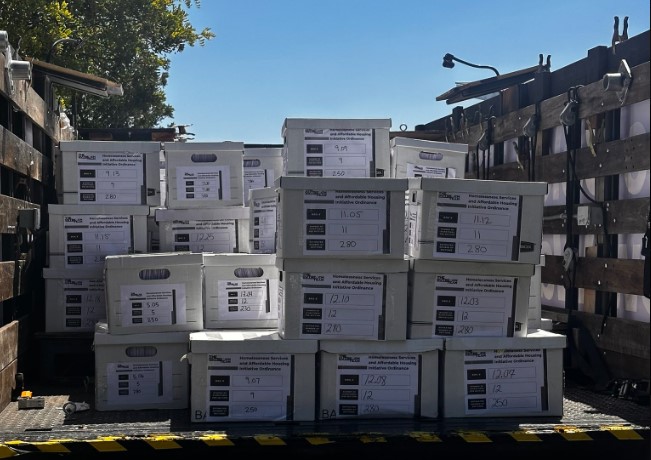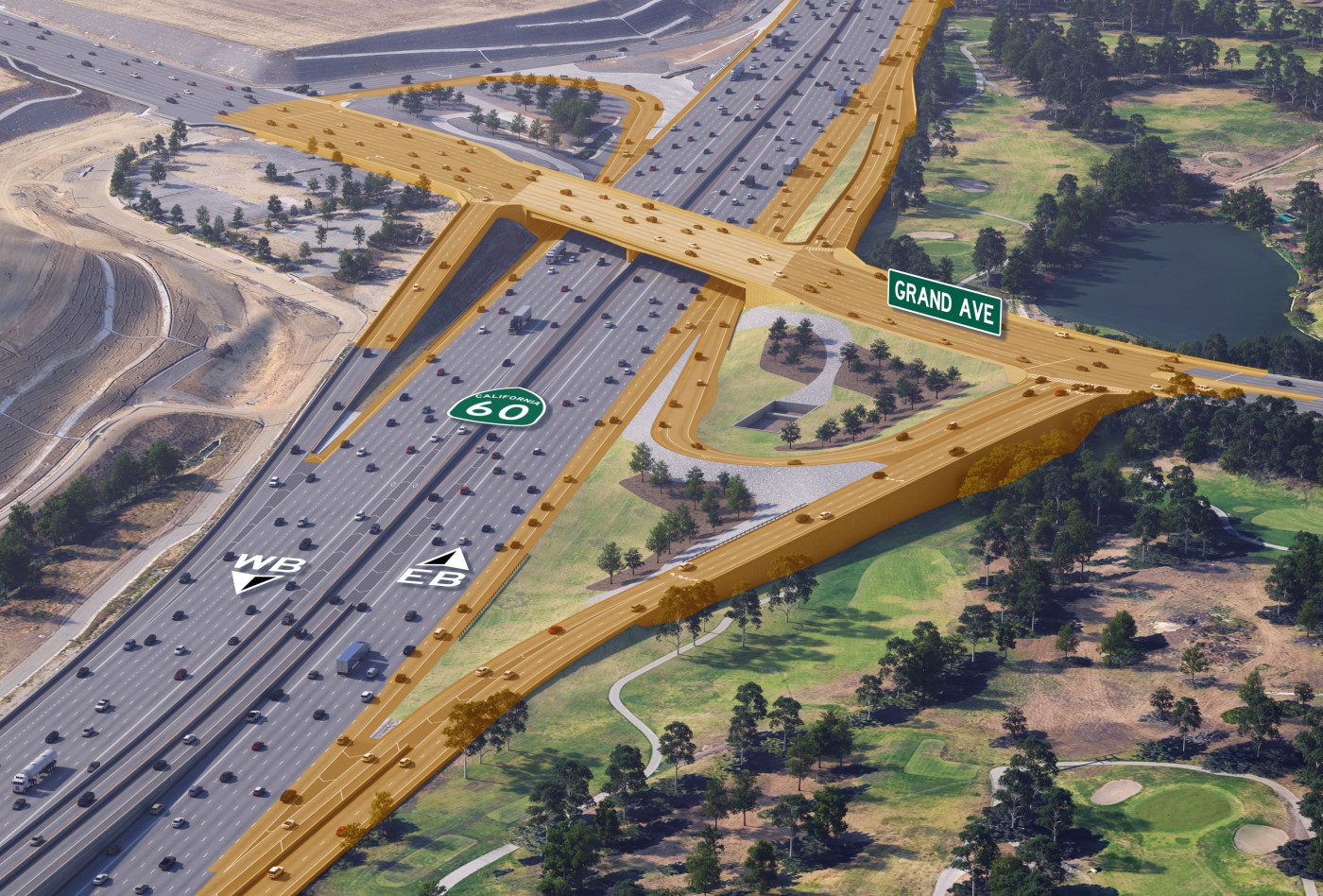At the request of the City Council, LADOT has been working on a plan and pilot to improve the run-times of the oft-delayed and slow-moving E Line (Expo) trains in Downtown Los Angeles. Earlier today, LADOT presented the results of their pilot program tinkering with light timing at Normandie and Exposition and got approval to expand the plan along the line.
Read the report to the Council, here.
"To be clear," declared Dan Mitchell with LADOT, "LADOT prioritizes transit in all the areas where the trains use traffic signals."
So then why does it seem as though Expo trains are always running late and slow, especially in Downtown Los Angeles?
It's because Expo is too popular.
Trains are waiting longer at stations than originally estimated because the line is attracting more customers than expected, explained Mitchell. The lights have not been retimed, and LADOT hasn't studied why delays are happening since "Phase II" of the Expo Line opened connecting the original Culver City terminus with Downtown Santa Monica.
LADOT argues that the attack this problem it need not do anything too drastic and does not plan on giving signal preemption to Expo Trains insuring a congestion free trip to the hundreds of passengers on every Expo train. Instead, they believe they can improve the system to 90% on-time arrivals by tinkering with the light timing based on how long trains are actually waiting at stations and to allow the signals at intersections to have the ability to make a minor adjustment to their timing if a train is close to making a light. To offset the impact on car traffic, a future light cycle will give more time to a north-south green light and less to an east-west alignment.
With these two changes at the Normandie intersection, Expo trains have run on-time between the stations of Western and Vermont 79% of the time, an increase of over 30%. Based on these findings, the City Council Transportation Committee unanimously approved a plan to repeat these changes up and down the Expo Line intersections throughout Los Angeles.
But not before Councilmember Mike Bonin asked the question many have wondered, "Why can’t we do signal preemption the entire way?”
Mitchell replied that LADOT has not even studied preemption along the entire route. In LADOT's view, preemption is something that's done in an emergency or special situation and that treating the arrival of a train as an "unexpected event" could actually make mobility along the corridor more difficult and would confuse pedestrians.
But Expo already receives signal preemptions at several places along the route, such as the crossing between Exposition and Arlington. The rail crossings may slow down car traffic as the gates go down well before the trains arrive as a safety precaution because of the trains' high speed; but it has not caused the kind of anger or backlash that should cause the agency to be nervous about expanding preemption.
Bonin requested that LADOT study expanding the preemption area when it returns in 60 days.
Councilmember Paul Koretz, while supportive of the study, cautioned that preemption can cause delays for car drivers. He recounted a story about a car trip he took one day on Westwood Boulevard that resulted in a ten-minute delay as trains moved back and forth so frequently that the gates keeping cars off the rail tracks never went back up. Koretz also remembered the early days of Expo Phase II when he heard frequent complaints about the train tying up traffic, although he hasn't heard them very recently as drivers have adjusted their schedules.
Koretz asked that LADOT also study whether Expo can add more rail cars to each train to serve the same number of passengers without having to run more frequent service. Metro has stated in the past that because of the platform size at stations, adding more cars without retrofitting many of the stations would not be feasible.





